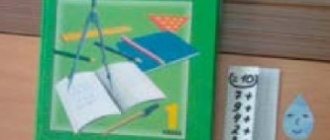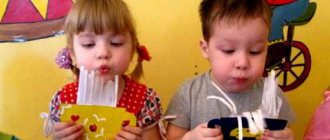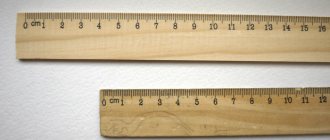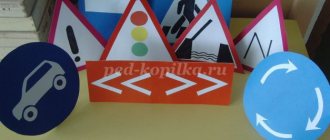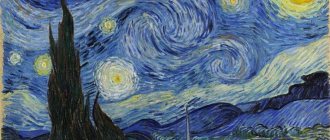Sample notes for a math lesson for children in kindergarten
Lesson title: “Superhero School”
Purpose of the lesson: To instill an interest in mathematics, to teach children to interact with each other when solving one problem.
Check and consolidate knowledge:
- counting to 10;
- composition of numbers within 10;
- days of the week;
- geometric figures;
- addition and subtraction.
Preliminary work:
Didactic games for sensory development: “Name the figures”, “Building a castle”, “Draw a fairy-tale hero”. Didactic games: “Days of the week”, “What, where?”. Games for attentiveness. Numbers from 1 to 10. Solving simple arithmetic problems, solving logical problems.
During the classes:
Educator:
Guys, today I received an email from Tony Stark. Who knows who this is? This is Iron Man. Since childhood, he loved solving various mathematical problems, became very smart and was able to make an iron man suit himself. If he had not studied mathematics, he would never have been able to design such a suit. He writes that he needs your help. Shall we help him?
First task: Solving the code
Goal: We strengthen the ability to count in the mind and think logically, and understand questions by ear. We repeat the material covered.
Materials: A box with a picture of Iron Man pasted on and a white field for entering the code, a pencil, masks and an envelope with tasks.
Execution: The teacher takes out a box and the children sit around it.
Tony sent me a box of activities and gifts for you. But to open it we need to solve the code, and to do this we need to answer 10 questions, since the code consists of ten digits, we will enter each answer in the input field on the box
The guys take turns answering the questions:
1. How many fingers are there on one hand? (five) 2. How many noses does a person have? (one) 3. How many legs do two cats have? (eight); 4. How many days are there in a week? (seven); 5. How many colors does the traffic light have? (three); 6. What number is between the numbers five and seven (six); 7. How many wheels does the car have? (four); 8. How many tails do two dogs have? (two); 9. Which number is less than 1? (zero); 10. Which number is greater than eight but less than ten? (nine).
We get the number: 5187364209, write it on the box and open it. At this time the music turns on.
Inside the box, an envelope with tasks and an iron man mask for each child.
Music plays, the guys take apart the masks and put them on.
Ready for the next challenge?
City of geometric shapes
Goal: To consolidate the ability to make appliqué from geometric shapes together. The guys work as a team, helping each other. Reinforce your knowledge of geometric shapes. Repeat the composition of the number 10.
Material: A1 sheet of whatman paper, geometric shapes: rectangles, squares, circles, triangles, etc., of different sizes, cut out of colored paper, glue in the form of pencils and paper figures of people.
Performance:
Guys now need to build a city in which Iron Man needs to save all the inhabitants
Children quickly and carefully stick on shapes, creating from ready-made shapes: houses, cars, traffic lights, etc.
Well done guys, now run around the chairs a little while the music is playing, as soon as the music ends you need to quickly sit down in your chair.
When the children run around on the appliqués, the teacher sticks numbers on them.
The music stops and the children take their seats.
Children, we need to remember what numbers the number 10 consists of, find these numbers in our city and stick figures of people of the same color on them. So that Iron Man can quickly fly in and save them.
Children complete the task.
Well done guys, you cope well with all the tasks, Iron Man will probably want to take you to his team of superheroes
Mathematical dictation
Goal: To consolidate the ability to perceive numbers and directions of movement by ear; you need to count the distance on squared paper.
Materials: notebook sheet of checkered paper, pencil, steering wheel.
Performance:
We distribute leaves and pencils to the children.
The next problem is from Tony Stark. You have a piece of paper with a point on it, from which we will begin to draw lines under dictation. If you do everything correctly, you will have a vehicle that will take you to your next mission.
1. 3-up 2. 4-right 3. 3-up 4. 5-right 5. 3-down 6. 4-right 7. 3-down 8. 2-left 9. 1-up 10. 2-left 11. 1-down 12. 5-left 13. 1-up 14. 2-left 15. 1-down 16. 2-left
Now let's draw two circles. What did we get? Car. We sit down on our chairs, take the steering wheels in our hands and head off to the next task.
Music is playing, the guys are going on a mission.
Days of the week
Goal: consolidate knowledge about the days of the week.
Performance:
Before the next task, you need to remember what days of the week there are, suddenly, the iron man will call you on a task and say that you need to come to him on Friday, but you won’t know when Friday will be and won’t be able to help him.
1. What day of the week is it today? 2. What day comes after Wednesday? (Thursday) 3. How many days are there in one week? (7) 4. What day does the week start? (Monday) 5. What is the name of the fifth day of the week? (Friday) 6. What are the working days of the week? 7. What are the days off of the week?
Well done! Let's move on to the next task.
Secret signs of superheroes.
Goal: to strengthen children’s ability to perceive a task by ear (number of claps), to correlate words with actions; be attentive and respond quickly to changing situations.
Material: chairs.
Completion: Now we need to learn the secret signs of superheroes. So that the enemy does not hear what the superheroes are talking about and does not guess how they want to catch him. They came up with the idea of showing different secret signs. We will now remember some of them and practice performing them.
- When I clap once you walk around your chairs;
- If I clap twice, you sit on your chairs;
- When you clap three times you need to lie down on the floor and freeze.
The training was successful, all the guys are ready for difficult and dangerous tasks.
Secret code
Goal: consolidate knowledge by solving simple arithmetic examples.
Performance:
Guys, we have the last difficult task, in order for the iron man not to be distracted from the battle, he asked us to solve the code from the secret laboratory of villains. To do this we need to solve 10 examples:
1. 2+3=5 2. 5-1=4 3. 1+2=3 4. 7-1=6 5. 5+2=7
6. 8+1=9 7. 1-1=0 8. 6+2=8 9. 3-2=1 10. 1+1=2
We got the code: 5436790812 Hurray! We completed all the tasks! We are real superheroes and deserve a real reward. We give each child a chocolate medal, a certificate and a badge.
Conclusions.
Using this outline as an example, you can write your own based on the preferences of your children and based on the knowledge and lessons that you took with them. Don’t do boring and uninteresting lessons based on old fairy tales; modern children don’t even know them and are not interested in them. Keep up with the times and rely on the interests of children.
Do it not for show, but for the delight and joy of the children.
Watch the kids' reaction, as soon as you see happiness in their eyes and keen interest, you know you succeeded!
Problems for a math lesson in kindergarten
Preschoolers need to be able to count from 1 to 10 forwards and backwards. Solve simple arithmetic problems. Develop auditory attention and coordination of movements, know the names of geometric shapes and be able to make other shapes from them. You need to know the days of the week and in what order they occur. And also seasons and months. Be able to navigate on a sheet of squared paper. Solve problems as a team, helping each other. Based on this data, we will compile an approximate list of tasks that can be used in lessons with preschoolers. You don't need to use all the assignments, stick to your script and stay within the lesson time frame.
Mathematical warm-up
- Count from 1 to 10 in order;
- Count backwards from 10 to 1;
- Count from 1 to 5, from 3 to 8, use different sequences within 10;
- Name the neighbors of the numbers 4, 5,6, etc.;
- Name the numbers that are between two numbers, for example, between 4 and 6 etc.;
- Compare numbers to see which number is larger or which is smaller;
- Name the previous and subsequent numbers.
Counting items
In this task, children must count pre-arranged objects or some animals in the picture, etc.
Easy puzzles
Here you can ask questions where the child will need to remember an object that is familiar to him or an animal that he knows and count, for example, how many legs or ears he has. For example: “How many fingers are on one hand?” or “How many ears do two dogs have?”
Geometric figures
To study shapes, you can let the children make a joint appliqué or, on the contrary, disassemble into geometric shapes an object familiar to them, which you have previously made from cubes. For example, you can make a car or a steam locomotive out of cubes and ask the children to tell what shapes it consists of.
To consolidate knowledge about different figures, you can use counting sticks and ask the children to make certain figures, and then count the number of sticks used to make this figure.
Mathematical dictation
In this task, children need to draw a picture on a piece of paper. The teacher hands out prepared notebook sheets in the box where the initial position of the pencil is marked with a dot. The teacher names the number of cells along which you need to draw a line in a given direction. After finishing the dictation, the children will have a drawing on their pieces of paper.
Seasons and days of the week
A task in which children answer questions about the seasons and days of the week.
Arithmetic examples
At this stage of the math lesson, children solve simple examples of addition and subtraction. To do this, you can use toys or special cards.
Auxiliary materials
From the list of tasks, we select those options that we liked and perhaps add our own. For each task you will need appropriate materials. These can be pencils, pieces of paper, glue, counting sticks and other auxiliary items. You also need to prepare children's songs for musical breaks. Depending on the scenario you choose, you will need appropriate costumes and pictures, as well as other attributes and decorations to attract the child's attention. To encourage children, prepare sweets or souvenir toys.
